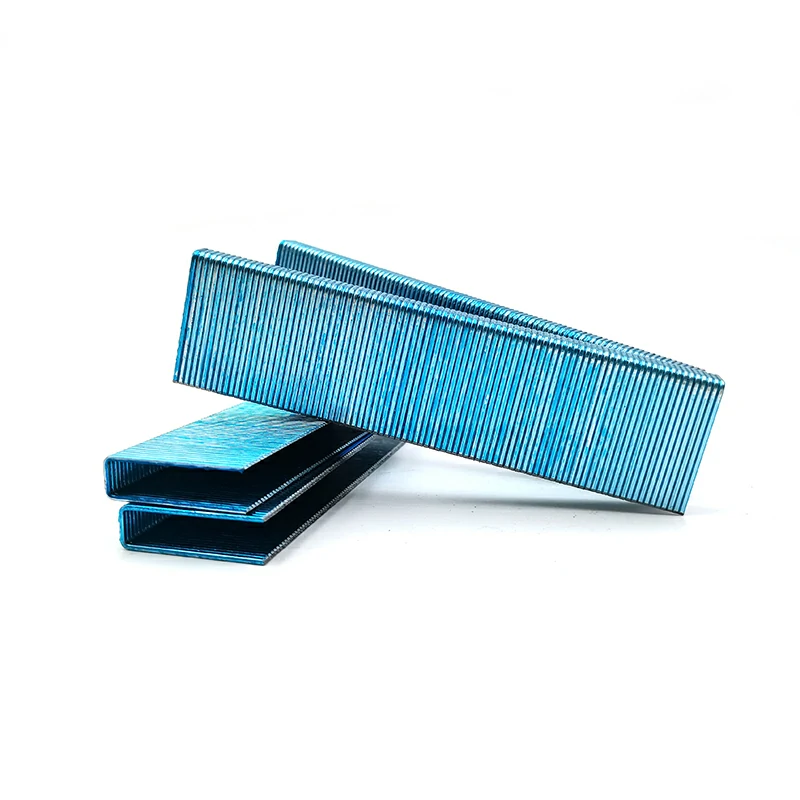The leg length of 18 gauge narrow crown staples can significantly impact the strength and stability of the fastened joint.
Here’s how the leg length influences the performance of the staples in creating a strong and durable connection:
- Penetration Depth:
- Longer leg lengths allow the staples to penetrate deeper into the material being fastened. This deeper penetration contributes to a more secure and robust connection.
- Material Thickness:
- The leg length should be appropriate for the thickness of the materials being joined. In thicker materials, longer leg lengths are often necessary to ensure that the staple fully engages both pieces, providing adequate holding power.
- Holding Power:
- Longer leg lengths generally result in increased holding power. The staple’s legs act as anchors that grip and secure the materials together, creating a stronger bond.
- Resistance to Forces:
- Staples with longer legs offer greater resistance to forces such as pulling or shearing. This is particularly important in applications where the fastened joint may experience stress or tension.
- Reduced Risk of Withdrawal:
- Longer leg lengths reduce the risk of staple withdrawal, where the staples pull out of the material. This is crucial for maintaining the structural integrity of the fastened components.
- Enhanced Stability:
- The additional length of the staple legs contributes to enhanced stability in the joint. 18 gauge narrow crown staples This is particularly beneficial in applications where structural integrity is critical, such as framing or woodworking.
- Versatility in Material Types:
- Staples with longer leg lengths can be more versatile and suitable for a broader range of materials. Whether fastening softwoods, hardwoods, or composite materials, the longer legs provide flexibility in application.
- Optimal for Structural Framing:
- In structural framing applications, where the joint is subjected to significant loads, longer leg lengths are often preferred to ensure a secure and durable connection.
- Consideration for Stapler Capacity:
- When using longer leg lengths, it’s essential to consider the capacity of the stapler or nail gun being used. The stapler should be capable of accommodating and driving staples of the desired length.
- Balancing Leg Length and Material Type:
- It’s crucial to strike a balance between leg length and the type of material being fastened. Using excessively long staples may not be necessary and can lead to over-penetration, potentially causing damage to the material.
- Adherence to Codes and Standards:
- In construction and woodworking, adherence to local building codes and standards is crucial. Ensure that the chosen leg length complies with regulations and provides the required strength for the specific application.
In summary, the leg length of 18 gauge narrow crown staples is a critical factor in determining the strength, stability, and holding power of the fastened joint. Careful consideration of the material thickness, application requirements, and the stapler’s capacity is necessary to select the appropriate leg length for a given project. Always refer to the manufacturer’s recommendations and guidelines for the specific type of staples being used.
